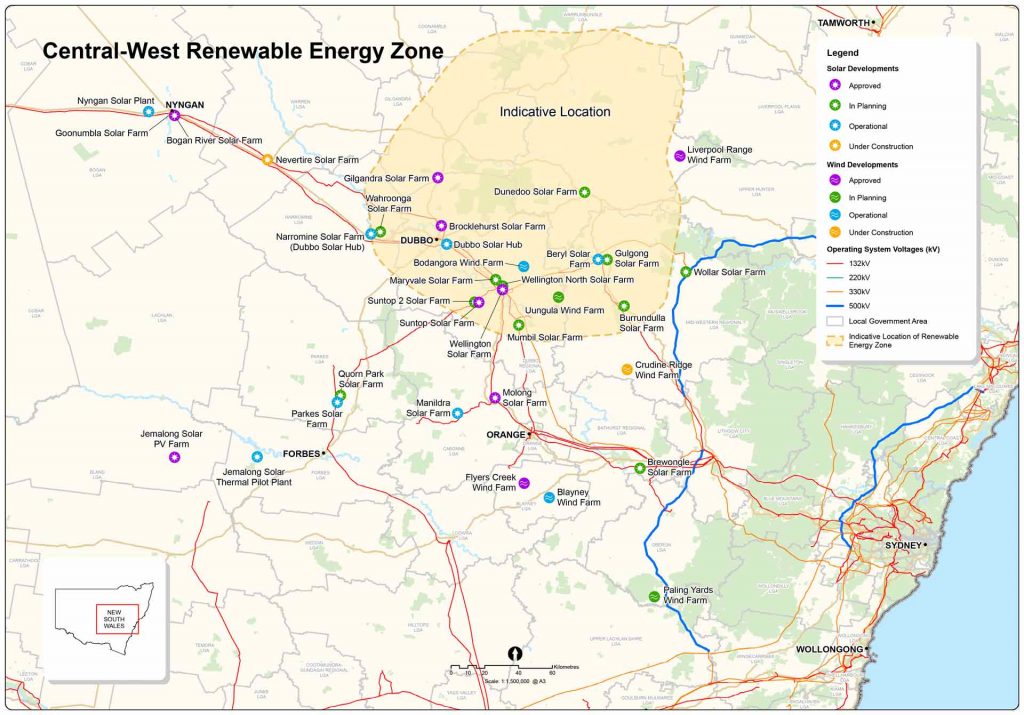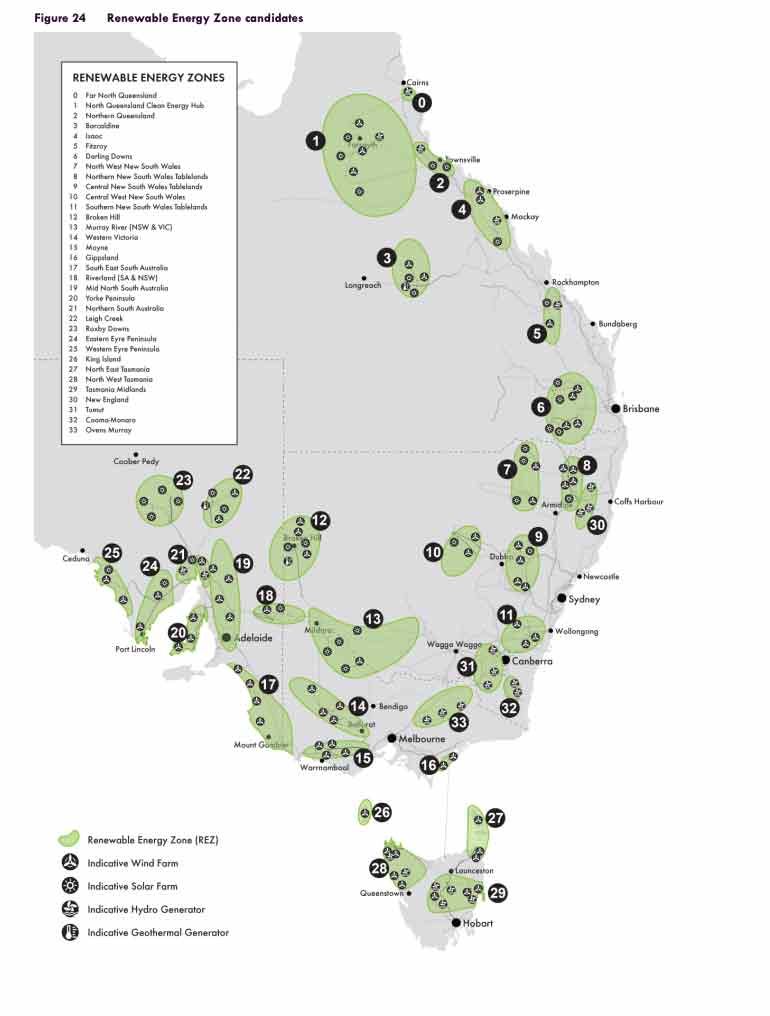Funding announced to kickstart NSW renewable energy zone
A new project could pave the way for construction to begin on a NSW renewable energy zone in 2022.

ARENA has announced $5 million in funding for TransGrid, in conjunction with the NSW Government, to undertake preliminary works for a Central West Orana renewable energy zone.
Proposed for an area surrounding Dubbo, the $16.2 million project will scope the feasibility of a plan to construct a high voltage transmission network that will unlock 3,000 MW of new electricity generation capacity.
TransGrid and the NSW Government say the new transmission infrastructure could be in place by the mid-2020s, supplying electricity for 1.3 million homes and providing hosting capacity for new renewable energy projects.

The new study will explore all aspects of developing a renewable energy zone and deliver a business case for the proposed Central-West Orana zone, which if approved could see construction begin in late 2022.
Estimates predict the project could create 450 jobs in the region and attract at least $4.5 billion in private sector investment.
WHAT ARE RENEWABLE ENERGY ZONES AND WHY DO THEY MATTER?
ARENA is providing funding as part of its work to improve the way renewable energy is integrated into the electricity network, which CEO Darren Miller says will plot a pathway for Australia’s first renewable energy zone.
“The Australian energy system is transitioning from dispatchable thermal generation to largely variable renewable energy generation. New transmission will be required to connect regions with strong renewable resources to load centres, where the electricity demand is, and to reduce network congestion,” Mr Miller said.
“This study is expected to provide a pathway to achieving Australia’s first true REZ and provide a blueprint for how others can be created in the future, helping to unlock investment in renewable energy projects, secure new regional jobs and cheaper, emissions-free energy.”
As well as assessing commercial viability, the business case will look at technical aspects of the proposal and undertake consultation with local communities. The study will scope the ideal size for the new transmission line, the cost and look at different financial and regulatory approaches for funding the project.
TransGrid CEO Paul Italiano said they were pleased to be working alongside the NSW Government with ARENA’s support, to develop the renewable energy zone.
“Investment in the new infrastructure will enable renewable energy providers to connect to the grid and enable more affordable, reliable and clean energy for New South Wales customers,” he said.
Network weak where wind and solar strongest
It is hoped that the project will provide a blueprint to develop other prospective renewable energy zones that face similar transmissions constraints, which could have long term benefits for the National Electricity Market.
In its Integrated System Plan, the Australian Energy Market Operator assessed 34 regions for their potential to deliver large amounts of renewable energy, at the times when it will be needed to meet demand.

The plan highlights the fact that the network is often weak where the renewable resources are strong, evident in the NSW Central West region where AEMO identified 3,000 MW of solar and 1,600 MW of wind potential.
The NSW Government has already committed $9 million towards the project, and will provide a further $31.2 million including creating a new body to oversee the development and delivery of the zone — one of three REZs that they are seeking to progress in the state.
Transmissions upgrades needed to boost hosting capacity
Research commissioned by ARENA has found the lack of transmission infrastructure to be a major barrier to developing some of Australia’s most promising areas for renewable generation.
The NSW Central West zone was assessed in detail as part of a Baringa Partners report released earlier this year, which found that poles and wires upgrades would be the most effective way to capture the renewable energy potential of the region.
While the study found a small amount of capacity available for new projects to connect, thermal constraints and a lack of system strength would hold back significant development in the area.
The consultants assessed a range of network and technological options to address the challenges, concluding that transmission upgrades could deliver 3 GW of new hosting capacity at a lower cost than the devices assessed, which included synchronous generators, large scale batteries and ‘smart wire’ systems.
The network improvements could also deliver more new capacity, with the technological options only able to provide 1 GW of capacity for new connections.
The primary disadvantage they found is that new transmission would take longer to build.
Read the Baringa Partners report.
LIKE THIS STORY? SIGN UP TO OUR NEWSLETTER

ARENA